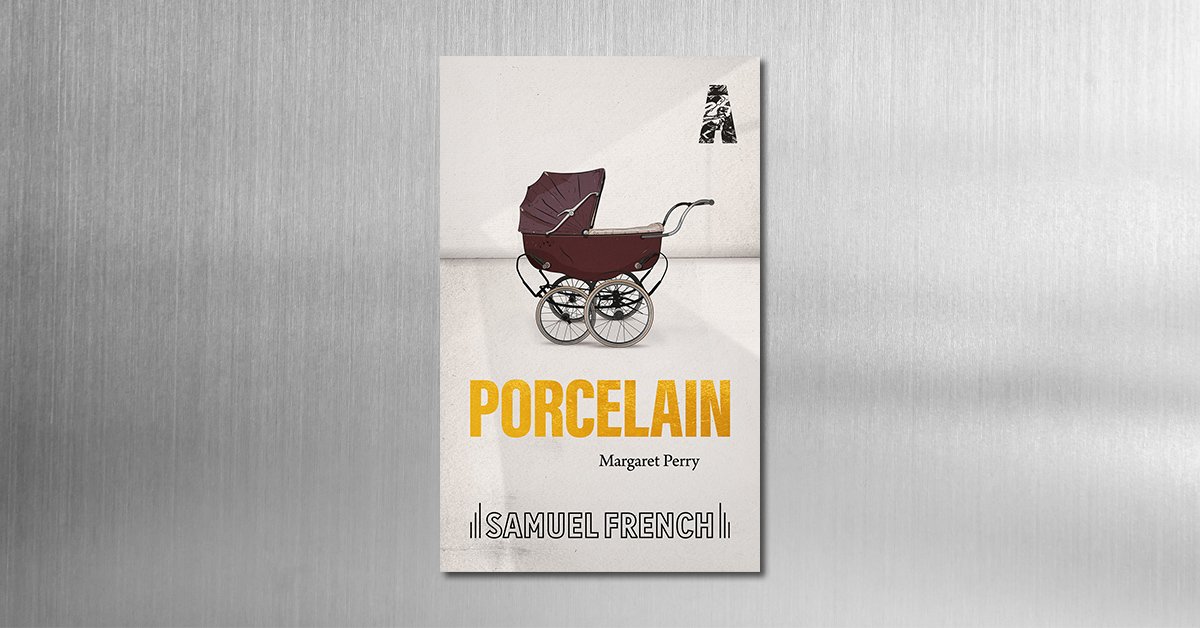
Porcelain (US/UK), a play by Margaret Perry, weaves past and present, myth and fact to explore the parallel stories of two Irish women in the 19th and 21st century. We caught up with Margaret about her play and the inspiration behind it, how she approached creating a new narrative for contemporary audiences using a historical figure, and her thoughts on adapting the play for an audio drama for BBC Radio 4.
…
Describe Porcelain in a few sentences.
Two young Irish women are separated by a century and united by their shared experience of depression. It’s a play about the way depression makes us strangers to the people who know us, and to ourselves, explored through the myth of the changeling – a copy of you that looks just like you, and sounds just like you, but is hollow.
When did you first come across the story of Bridget Cleary? And how did you approach using historical fact when creating a new narrative for contemporary audiences?
I found Bridget when I was asked on a writing course to write a short monologue from the perspective of someone who had been historically overlooked. That was in 2016. I was struck that she was the same age when she died as I was then – 26. And I was obsessed with the fact that her husband thought she’d been spirited away by the fairies, when it sounded to me like she was experiencing depression. She sounded thoroughly modern, to me. I felt I knew her somehow and I wanted to try to write her.
I did a lot of reading and research in my approach to working with historical fact. It helped me get under Bridget’s and Michael’s skins, and a lot of the detail in that research found its way into the play. The gold earrings in her ears when her body was found, for example, and the way she laid with knees drawn up to her chest. However, I don’t think I needed to do much work to make it contemporary. I’m not sure I believe there is much difference between the inner lives of people in history and now. The external circumstances are different but the insides of our heads are the same, and this is very much a play about the insides of people’s heads.
The play moves between London and Tipperary, from the present day to 1895. How did you go about structuring the piece in this way? What were the challenges of working with simultaneous timelines?
This felt like quite a natural structure. I have always liked plays that layer time periods and locations on top of one another as it feels like something theatre can uniquely do – have multiple spaces exist simultaneously. Caryl Churchill’s Fen (US/UK) comes to mind as the first play I read that does this – the space is described as both a house, and a field. And it is both those spaces, porously. So I tried to do that in Porcelain too.
What advice would you have for companies looking to stage the show?
My main staging advice is the above answer really – resist the urge to rigidly switch between the contemporary and historical locations, and try to create a space that feels like both those places at once, all the time. And don’t go too heavy with the tone. The play’s about heavy stuff obviously, but I hope it feels light!
You also adapted Porcelain for BBC Radio 4. How did you transform a stage show into a piece of audio storytelling?
That was a lovely process, expertly guided by the play’s producer and director Jessica Dromgoole. To adapt it I thought about replacing the visual motifs in the play – the colour gold is one for example – into sonic ones. Water emerged as the biggest sonic motif, so I leaned into that in my rewrite. I wanted to make sure the play for radio retained its tone. That’s what you’re really doing in adaptation I think, whether it’s an adaptation of your own work or someone else’s – taking the tone of the original and shaping it anew in the new medium you’re working in.
Was the play always titled Porcelain and what significance does that have to you? How do you approach choosing titles for your creative work?
I love titles. I’m always going on about them. I never feel I know what a play is until I’ve found its title. Porcelain was always the title, because I got obsessed from quite early on at how translucent porcelain is as a material, and how brittle. It was this quality of brittleness that I felt was deep in the bones of the play. I don’t actually feel like I choose my titles. I’ve never sat down and made a list and done any kind of process of elimination. I just start to write and at some point in the process – often early, but sometimes later – the title announces itself in my head and I feel in my gut that it’s the right one. A good title should be like the hammer that rings the bell of the play. (I nicked that phrase from a teacher I had, brilliant poet Jacob Sam-La Rose.) It doesn’t label the play, but rather, makes it sing.
Are there particular playwrights who have influenced your work?
Lots. Caryl Churchill (US/UK), Sarah Kane and Samuel Beckett (US/UK) have been huge for me and gave me permission to write how I always wanted to, I think – to find the tone, the atmosphere and the metaphor first, before the story, the plot and the character. The precision, beauty and formal daring of Alice Birch’s work (US/UK) endlessly inspires me. And I love Annie Baker (US/UK) too. Her work gives me permission in the opposite direction – to be detailed and delve deep into the lives of the human beings I’m writing about, and not worry that people talking to each other on a stage is somehow trivial. It’s the very opposite. It’s the entire heart of the thing.
…
For more information about Porcelain, visit Concord Theatricals in the US or UK.

Plays with All-Female Casts

Bon Appetit! Shows Set in Restaurants

